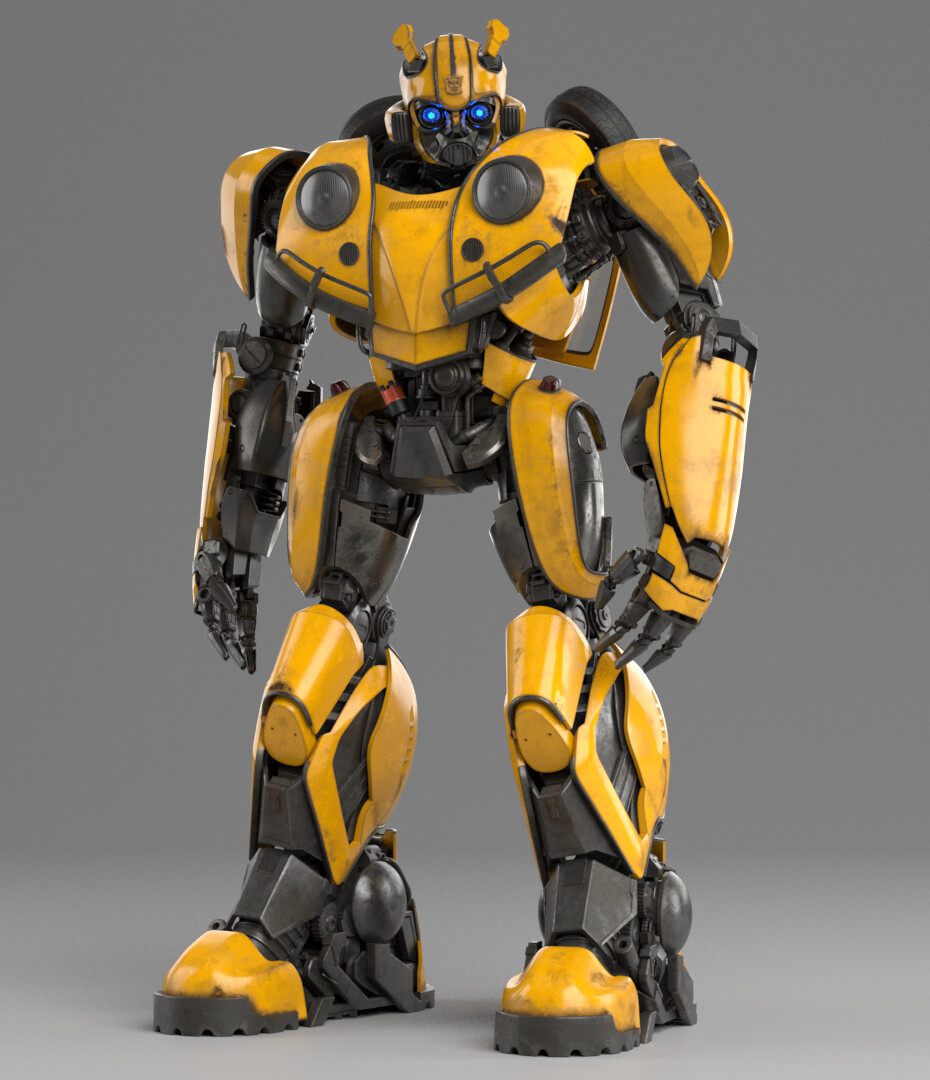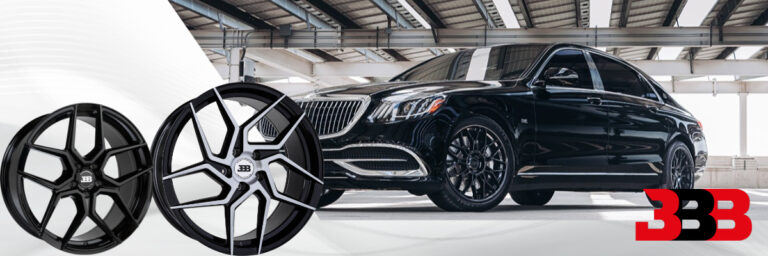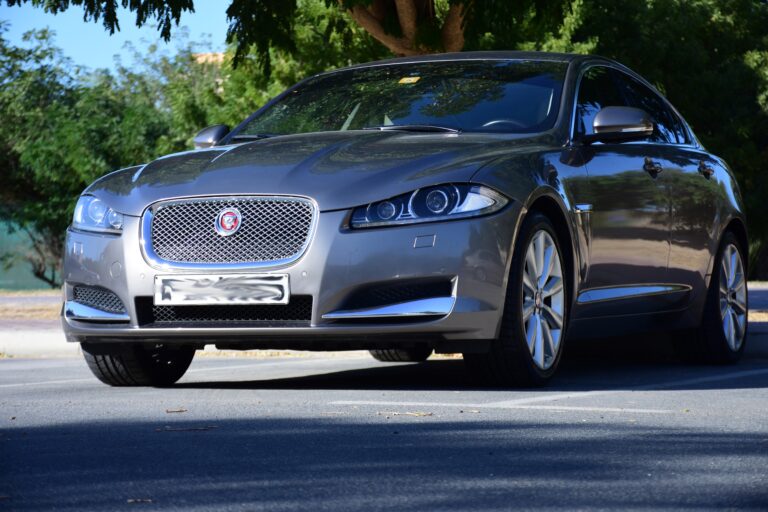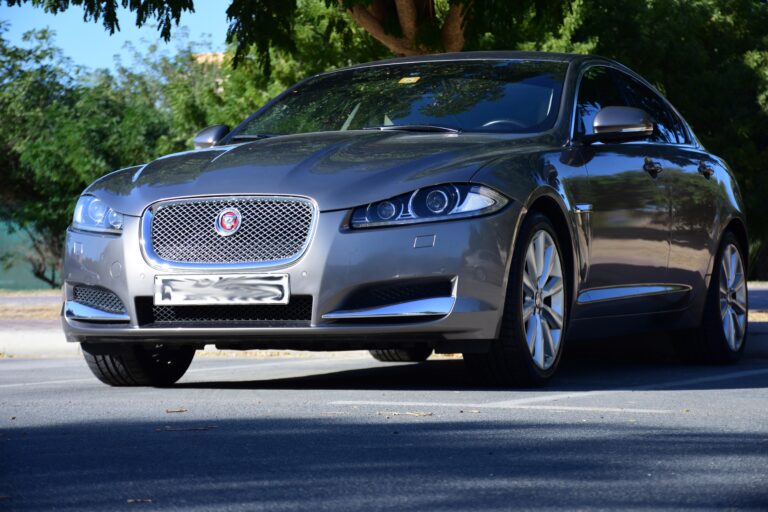Bumblebee Car Brand: The Enduring Legacy of an Automotive Icon
Bumblebee Car Brand: The Enduring Legacy of an Automotive Icon cars.truckstrend.com
In the vast landscape of automotive enthusiasts and pop culture, few vehicles hold as iconic a status as the "Bumblebee car." While the phrase "Bumblebee Car Brand" might suggest a standalone automotive manufacturer, it’s crucial to clarify from the outset: there is no independent car brand named "Bumblebee." Instead, "Bumblebee Car Brand" refers to the highly recognizable and beloved yellow and black vehicle, primarily the Chevrolet Camaro, that serves as the alternate mode for the Autobot hero Bumblebee in the Transformers franchise. This article will delve into the profound impact, evolution, and cultural significance of this automotive icon, exploring how a fictional character transformed real-world vehicles into objects of desire and a powerful symbol within car culture.
The importance of the "Bumblebee Car Brand" lies not in its manufacturing origin, but in its unparalleled brand recognition, emotional connection with millions of fans, and its significant influence on the perception and sales of the Chevrolet Camaro. It represents a unique confluence of entertainment, automotive design, and marketing prowess, creating a legacy that transcends mere metal and machinery.
Bumblebee Car Brand: The Enduring Legacy of an Automotive Icon
The Genesis of an Icon: Bumblebee’s Automotive Evolution
Bumblebee’s automotive identity has evolved significantly since his debut in the 1980s. Understanding this evolution is key to appreciating the "Bumblebee Car Brand" today.
1. The Original G1: Volkswagen Beetle (1984-1987)
In the original Transformers animated series and toy line (Generation 1), Bumblebee was famously a small, yellow Volkswagen Beetle. This choice underscored his friendly, underdog nature, making him relatable and endearing to audiences. The humble Beetle was an accessible, everyday car, perfectly contrasting with the larger, more powerful Autobots and Decepticons.
2. The Live-Action Era: Chevrolet Camaro (2007-Present)
The true explosion of the "Bumblebee Car Brand" as we know it began with Michael Bay’s live-action Transformers movie in 2007. Paramount Pictures and General Motors forged a groundbreaking partnership, leading to a radical redesign of Bumblebee’s alt-mode. The Volkswagen Beetle was replaced by a muscle car: the Chevrolet Camaro. This strategic decision was multifaceted:
- Modern Appeal: The sleek, aggressive lines of the then-concept Fifth-Generation Camaro offered a more contemporary and powerful aesthetic suitable for a blockbuster action film.
- Marketing Synergy: It provided an unparalleled global platform for Chevrolet to showcase its new Camaro, which was still a few years from its official production launch.
- Visual Impact: The Camaro’s larger size and powerful stance allowed for more dynamic on-screen transformations and action sequences.
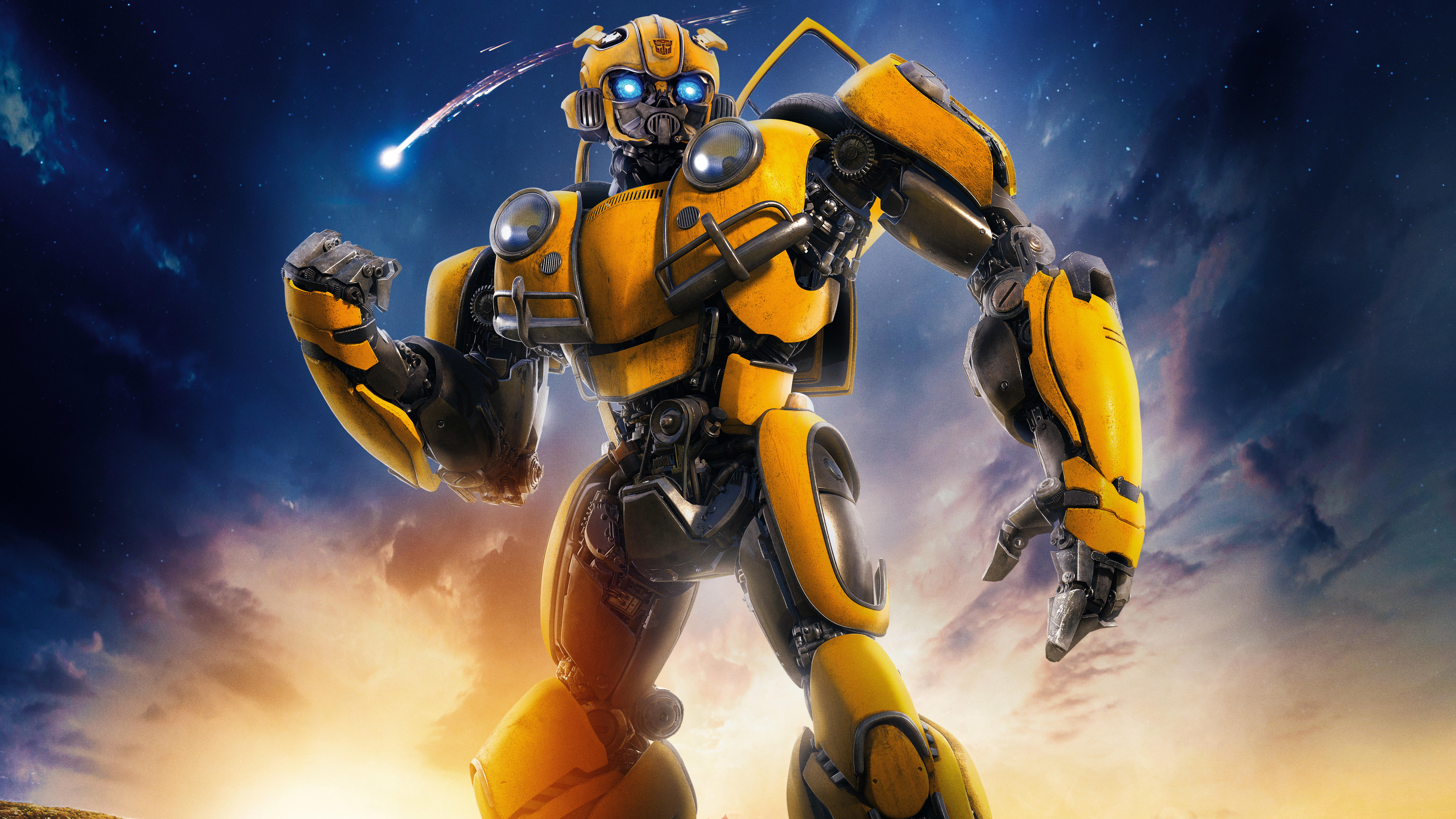
This transition from a humble Beetle to a roaring Camaro was initially met with mixed reactions from purists but quickly solidified Bumblebee’s new identity, cementing the yellow and black Camaro as the definitive "Bumblebee car" for a new generation.
The Chevrolet Camaro: The Quintessential Bumblebee Vehicle
.png/revision/latest?cb=20230624225409u0026path-prefix=protagonist)
The partnership between Transformers and Chevrolet proved to be a stroke of genius, turning the Camaro into a global superstar.
From Concept to Screen:
For the 2007 film, Bumblebee initially appears as a beat-up 1977 Chevrolet Camaro, reflecting his status as a hidden, forgotten Autobot. However, he soon scans and transforms into a pristine 2006 Chevrolet Camaro Concept car. This dramatic transformation showcased the future of American muscle, instantly generating immense buzz for the upcoming production model of the Fifth-Generation Camaro.
Evolution Through the Films:
As the Transformers film series progressed, Bumblebee’s Camaro evolved, mirroring real-world Camaro designs and showcasing various customization elements:
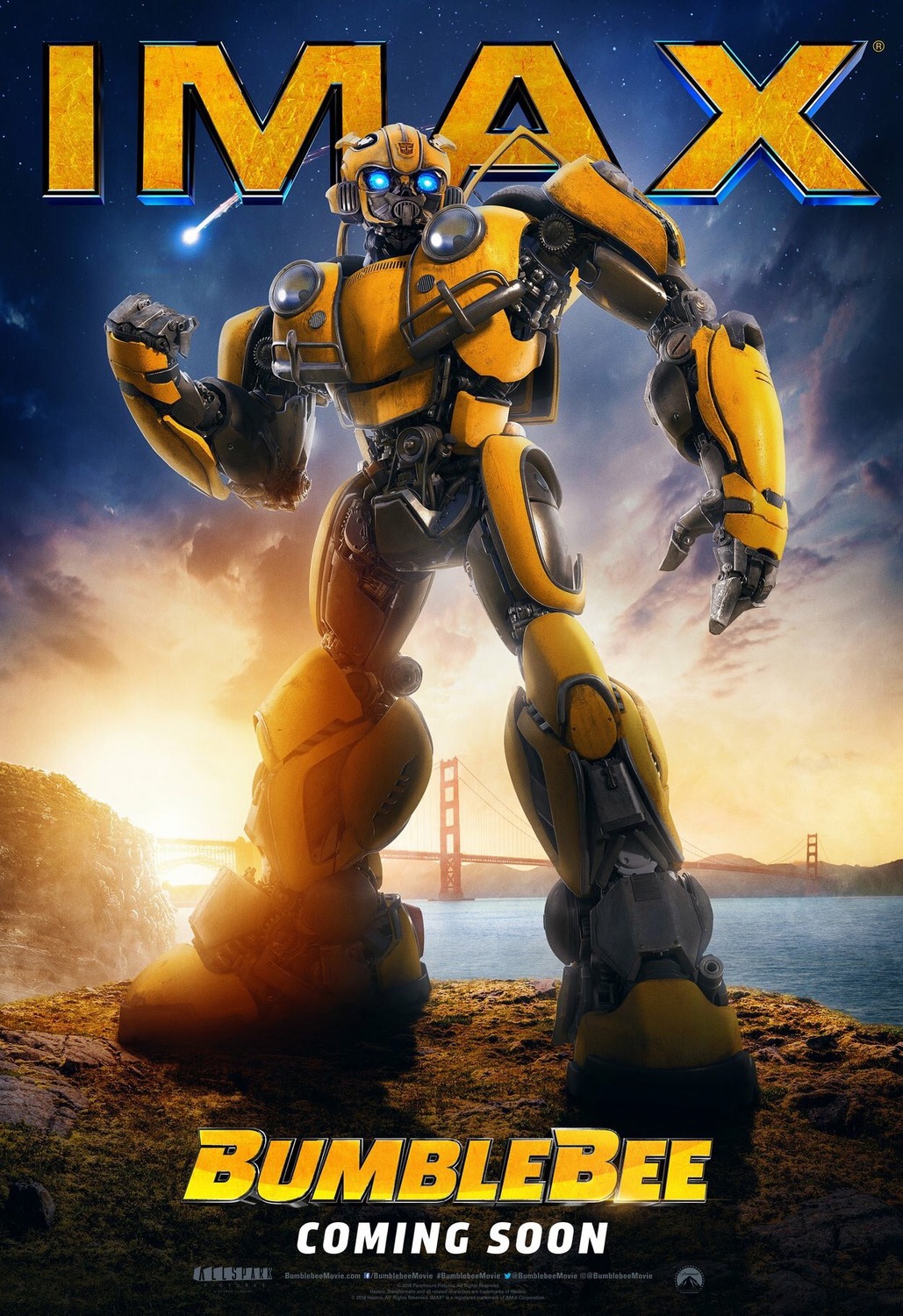
- Transformers (2007): 2006 Camaro Concept and later a 2009 Production Camaro.
- Revenge of the Fallen (2009): A slightly modified 2010 Production Camaro.
- Dark of the Moon (2011): A more aggressive 2011 Production Camaro with unique black racing stripes, darker wheels, and a custom front splitter and rear spoiler.
- Age of Extinction (2014): A dramatic shift, with Bumblebee starting as a heavily customized 1967 Chevrolet Camaro SS before transforming into a sleek 2014 Camaro Concept that hinted at the Sixth-Generation design.
- The Last Knight (2017): A highly stylized and armored 2016 Chevrolet Camaro, showcasing extreme body modifications.
- Bumblebee (2018): This prequel film brought Bumblebee back to his roots, primarily featuring him as a Volkswagen Beetle before a brief appearance as a 1977 Camaro, tying into his first appearance in the 2007 film.
- Rise of the Beasts (2023): An off-road modified 1977 Chevrolet Camaro, demonstrating the character’s adaptability and showcasing a rugged new look.
Impact on Camaro Sales and Image:
The "Bumblebee Effect" on Chevrolet Camaro sales and brand image cannot be overstated. The films provided unparalleled global exposure, particularly to younger demographics. The Camaro became synonymous with heroism, power, and cutting-edge design. This synergy undoubtedly contributed to the successful relaunch of the Camaro and its strong performance in the market, allowing it to reclaim its position as a formidable competitor in the muscle car segment. For many, the desire to own a Camaro was directly linked to the dream of driving their own "Bumblebee car."
The "Bumblebee Edition" and Special Models
Recognizing the immense popularity, Chevrolet capitalized on the "Bumblebee Car Brand" phenomenon with official special editions.
Chevrolet Camaro Transformers Special Edition:
Chevrolet released two official "Transformers Special Edition" Camaro models:
- 2010 Camaro Transformers Special Edition: Based on the LT and SS models, this package included Rally Yellow exterior paint, black rally stripes, Autobot shield emblems on the front fenders and wheel caps, "Transformers" badging on the door sills, and embroidered Autobot shields on the center console and front headrests.
- 2012 Camaro Transformers Special Edition: Similar to the 2010 version but based on the refreshed 2012 model.
These limited-edition models offered fans a factory-produced version of the iconic movie car, providing a tangible connection to the Transformers universe.
Aftermarket Customizations and Replicas:
Beyond official editions, the "Bumblebee Car Brand" has inspired countless aftermarket customizations. Car enthusiasts worldwide have transformed their own Camaros (and sometimes other vehicles) into Bumblebee replicas, ranging from simple yellow and black paint jobs to elaborate body kits, lighting effects, and custom interiors designed to mimic the movie car’s aesthetics. This widespread adoption highlights the deep emotional resonance of the "Bumblebee Car Brand" within the automotive community.
Driving the Bumblebee Dream: Practical Considerations
For those inspired to own or create their own "Bumblebee car," several practical considerations come into play.
Buying a Camaro (New or Used):
- Generations: The Fifth (2010-2015) and Sixth (2016-Present) Generations of the Camaro are the most direct inspirations for the movie cars. Older models, particularly the 1967-1969 or 1977-1981 models, can also serve as the basis for vintage Bumblebee replicas.
- Trim Levels: From the base LT models to the powerful SS and ZL1 variants, Camaros offer a range of performance. Your choice will depend on budget and desired driving experience.
- Maintenance & Ownership: Camaros are generally reliable, but like any performance car, they require regular maintenance. Fuel costs (especially for V8 models) and insurance premiums should be factored in.
Customizing Your Car to Be "Bumblebee":
- Paint Scheme: The most crucial element is the Rally Yellow exterior with black racing stripes. Ensure a high-quality paint job or vinyl wrap.
- Body Kits: Many aftermarket body kits are available that mimic the aggressive spoilers, side skirts, and front fascias seen on movie versions of Bumblebee.
- Wheels: Dark or black wheels are characteristic. Specific wheel designs from the movies can be replicated.
- Lighting: Adding LED accents, particularly underbody lights or custom headlight modifications, can enhance the "robot in disguise" feel.
- Interior Accents: Consider yellow stitching, custom floor mats, or even small Autobot emblems within the cabin.
- Sound System: While not visual, a powerful sound system can enhance the feeling of driving a movie car.
Insurance and Resale Value:
- Insurance: A "Bumblebee" customization, especially significant body modifications, might affect insurance premiums. It’s essential to inform your insurer about any substantial changes to ensure adequate coverage.
- Resale Value: While a well-executed Bumblebee customization can be a unique selling point for a specific niche of buyers, it might not always increase the car’s value to the general public. Extreme modifications can sometimes limit appeal. Official "Transformers Edition" models, however, tend to hold their value well among collectors.
The Cultural Phenomenon and Its Legacy
The "Bumblebee Car Brand" extends far beyond individual vehicles; it’s a cultural phenomenon.
Fan Community:
The Transformers franchise boasts a massive, dedicated global fanbase. This translates into vibrant car communities centered around Bumblebee. Car meets, conventions (like BotCon or local Comic-Cons), and online forums regularly feature Bumblebee-inspired vehicles, allowing owners to connect, share tips, and showcase their passion.
Merchandise and Collectibles:
The success of the "Bumblebee Car Brand" has spawned an enormous market for merchandise. From high-end die-cast models and transforming action figures to apparel, posters, and video games, Bumblebee’s automotive forms are consistently represented, reinforcing his iconic status.
Influence on Car Culture:
Bumblebee has introduced countless individuals to the world of cars, particularly muscle cars. For many, their first exposure to a Chevrolet Camaro was through the Transformers films, sparking an interest that often leads to lifelong automotive enthusiasm. He has made car customization cool and accessible, inspiring a generation to personalize their vehicles.
Challenges:
One challenge related to the "Bumblebee Car Brand" is discerning between genuine, high-quality replicas and poorly executed imitations. Another is managing expectations; while a car can look like Bumblebee, it doesn’t possess sentient AI or the ability to transform (yet!).
Price Table: Chevrolet Camaro Models (Associated with "Bumblebee")
As established, "Bumblebee Car Brand" is not a manufacturer. This table provides estimated price ranges for Chevrolet Camaro models that have served as Bumblebee’s alternate mode or are commonly customized to resemble him. Prices vary significantly based on condition, mileage, trim level, options, and market demand.
| Model Year / Generation | Trim/Engine (Example) | New Price Range (USD) | Used Price Range (USD) | Notes |
| :———————- | :——————– | :——————— | :——————— | :——————————————————————————————————————————————————————————————————————————————————————————————————————————————————————————————————————————————————————————————————————————————————————————————————————————————————————————————————————————————————————————————————————————————————————————————————————————————————————————————————————————————————————————————————————————————————————————————————————————————————————————————————————————————————————————————————————————————————————————————————————————————————————————————————————————————————————————————————————————————————————————————————————————————————————————————————————————————————————————————————————————————————————————————————————————————————————————————————————————————————————————————————————————————————————————————————————————————————————————————————————————————————————————————————————————————————————————————————————————————————————————————————————————————————————————————————————————————————————————————————————————————————————————————————————————————————————————————————————————————————————————————————————————————————————————————————————————————————————————————————————————————————————————————————————————————————————————————————————————————————————————————————————————————————————————————————————————————————————————————————————————————————————————————————————————————————————————————————————————————————————————————————————————————————————————————————————————————————————————————————————————————————————————————————————————————————————————————————————————————————————————————————————————————————————————————————————————————————————————————————————————————————————————————————————————————————————————————————————————————————————————————————————————————————————————————————————————————————————————————————————————————————————————————————————————————————————————————————————————————————————————————————————————————————————————————————————————————————————————————————————————————————————————————————————————————————————————————————————————————————————————————————————————————————————————————————————————————————————————————————————————————————————————————————————————————————————————————————————————————————————————————————————————————————————————————————————————————————————————————————————————————————————————————————————————————————————————————————————————————————————————————————————————————————————————————————————————————————————————————————————————————————————————————————————————————————————————————————————————————————————————————————————————————————————————————————————————————————————————————————————————————————————————————————————————————————————————————————————————————————————————————————————————————————————————————————————————————————————————————————————————————————————————————————————————————————————————————————————————————————————————————————————————————————————————————————————————————————————————————————————————————————————————————————————————————————————————————————————————————————————————————————————————————————————————————————————————————————————————————————————————————————————————————————————————————————————————————————————————————————————————————————————————————————————————————————————————————————————————————————————————————————————————————————————————————————————————————————————————————————————————————————————————————————————————————————————————————————————————————————————————————————————————————————————————————————————————————————————————————————————————————————————————————————————————————————————————————————————————————————————————————————————————————————————————————————————————————————————————————————————————————————————————————————————————————————————————————————————————————————————————————————————————————————————————————————————————————————————————————————————————————————————————————————————————————————————————————————————————————————————————————————————————————————————————————————————————————————————————————————————————————————————————————————————————————————————————————————————————————————————————————————————————————————————————————————————————————————————————————————————————————————————————————————————————————————————————————————————————————————————————————————————————————————————————————————————————————————————————————————————————————————————————————————————————————————————————————————————————————————————————————————————————————————————————————————————————————————————————————————————————————————————————————————————————————————————————————————————————————————————————————————————————————————————————————————————————————————————————————————————————————————————————————————————————————————————————————————————————————————————————————————————————————————————————————————————————————————————————————————————————————————————————————————————————————————————————————————————————————————————————————————————————————————————————————————————————————————————————————————————————————————————————————————————————————————————————————————————————————————————————————————————————————————————————————————————————————————————————————————————————————————————————————————————————————————————————————————————————————————————————————————————————————————————————————————————————————————————————————————————————————————————————————————————————————————————————————————————————————————————————————————————————————————————————————————————————————————————————————————————————————————————————————————————————————————————————————————————————————————————————————————————————————————————————————————————————————————————————————————————————————————————————————————————————————————————————————————————————————————————————————————————————————————————————————————————————————————————————————————————————————————————————————————————————————————————————————————————————————————————————————————————————————————————————————————————————————————————————————————————————————————————————————————————————————————————————————————————————————————————————————————————————————————————————————————————————————————————————————————————————————————————————————————————————————————————————————————————————————————————————————————————————————————————————————————————————————————————————————————————————————————————————————————————————————————————————————————————————————————————————————————————————————————————————————————————————————————————————————————————————————————————————————————————————————————————————————————————————————————————————————————————————————————————————————————————————————————————————————————————————————————————————————————————————————————————————————————————————————————————————————————————————————————————————————————————————————————————————————————————————————————————————————————————————————————————————————————————————————————————————————————————————————————————————————————————————————————————————————————————————————————————————————————————————————————————————————————————————————————————————————————————————————————————————————————————————————————————————————————————————————————————————————————————————————————————————————————————————————————————————————————————————————————————————————————————————————————————————————————————————————————————————————————————————————————————————————————————————————————————————————————————————————————————————————————————————————————————————————————————————————————————————————————————————————————————————————————————————————————————————————————————————————————————————————————————————————————————————————————————————————————————————————————————————————————————————————————————————————————————————————————————————————————————————————————————————————————————————————————————————————————————————————————————————————————————————————————————————————————————————————————————————————————————————————————————————————————————————————————————————————————————————————————————————————————————————————————————————————————————————————————————————————————————————————————————————————————————————————————————————————————————————————————————————————————————————————————————————————————————————————————————————————————————————————————————————————————————————————————————————————————————————————————————————————————————————————————————————————————————————————————————————————————————————————————————————————————————————————————————————————————————————————————————————————————————————————————————————————————————————————————————————————————————————————————————————————————————————————————————————————————————————————————————————————————————————————————————————————————————————————————————————————————————————————————————————————————————————————————————————————————————————————————————————————————————————————————————————————————————————————————————————————————————————————————————————————————————————————————————————————————————————————————————————————————————————————————————————————————————————————————————————————————————————————————————————————————————————————————————————————————————————————————————————————————————————————————————————————————————————————————————————————————————————————————————————————————————————————————————————————————————————————————————————————————————————————————————————————————————————————————————————————————————————————————————————————————————————————————————————————————————————————————————————————————————————————————————————————————————————————————————————————————————————————————————————————————————————————————————————————————————————————————————————————————————————————————————————————————————————————————————————————————————————————————————————————————————————————————————————————————————————————————————————————————————————————————————————————————————————————————————————————————————————————————————————————————————————————————————————————————————————————————————————————————————————————————————————————————————————————————————————————————————————————————————————————————————————————————————————————————————————————————————————————————————————————————————————————————————————————————————————————————————————————————————————————————————————————————————————————————————————————————————————————————————————————————————————————————————————————————————————————————————————————————————————————————————————————————————————————————————————————————————————————————————————————————————————————————————————————————————————————————————————————————————————————————————————————————————————————————————————————————————————————————————————————————————————————————————————————————————————————————————————————————————————————————————————————————————————————————————————————————————————————————————————————————————————————————————————————————————————————————————————————————————————————————————————————————————————————————————————————————————————————————————————————————————————————————————————————————————————————————————————————————————————————————————————————————————————————————————————————————————————————————————————————————————————————————————————————————————————————————————————————————————————————————————————————————————————————————————————————————————————————————————————————————————————————————————————————————————————————————————————————————————————————————————————————————————————————————————————————————————————————————————————————————————————————————————————————————————————————————————————————————————————————————————————————————————————————————————————————————————————————————————————————————————————————————————————————————————————————————————————————————————————————————————————————————————————————————————————————————————————————————————————————————————————————————————————————————————————————————————————————————————————————————————————————————————————————————————————————————————————————————————————————————————————————————————————————————————————————————————————————————————————————————————————————————————————————————————————————————————————————————————————————————————————————————————————————————————————————————————————————————————————————————————————————————————————————————————————————————————————————————————————————————————————————————————————————————————————————————————————————————————————————————————————————————————————————————————————————————————————————————————————————————————————————————————————————————————————————————————————————————————————————————————————————————————————————————————————————————————————————————————————–################BThe Bumblebee Car Brand: A Cultural Icon’s Journey Through Automotive History
In the vast landscape of automotive history, few vehicles hold as iconic and culturally significant a place as the "Bumblebee car." While the title "Bumblebee Car Brand" might suggest a standalone automotive manufacturer, it’s essential to clarify upfront: there isn’t a dedicated car brand named "Bumblebee." Instead, this widely recognized moniker refers to the distinct, yellow and black vehicles that serve as the alternate modes for the beloved Autobot hero, Bumblebee, from the Transformers franchise. This article delves deep into the fascinating narrative of the "Bumblebee Car Brand," exploring its origins, its evolution through various cinematic interpretations, its profound impact on real-world automotive culture, and the lasting legacy it has forged.
The importance of the "Bumblebee Car Brand" lies not in its manufacturing heritage, but in its unparalleled global brand recognition, its deep emotional resonance with millions of fans, and its significant influence on the perception and sales of the Chevrolet Camaro. It represents a unique, powerful synergy between entertainment and automotive design, creating an enduring symbol that transcends mere metal and machinery.
The Genesis of an Icon: Bumblebee’s Automotive Evolution
Bumblebee’s automotive identity has undergone a remarkable transformation since his inception, reflecting changing times and cinematic visions. Understanding this evolution is paramount to appreciating the modern "Bumblebee Car Brand."
1. The Original G1: The Humble Volkswagen Beetle (1984-1987)
For many original Transformers fans, Bumblebee’s first and most nostalgic alternate mode was a small, yellow Volkswagen Beetle. In the Generation 1 animated series and accompanying toy line, this choice perfectly encapsulated Bumblebee’s character: he was the smallest and most unassuming of the Autobots, yet incredibly brave, loyal, and resourceful. The Beetle, an accessible and everyday vehicle, provided a stark contrast to the larger, more formidable Autobots and Decepticons, endearing him to a generation of viewers.
2. The Live-Action Era: The Roaring Chevrolet Camaro (2007-Present)
The true global explosion of the "Bumblebee Car Brand" as a modern automotive icon began with Michael Bay’s live-action Transformers movie in 2007. A groundbreaking collaboration between Paramount Pictures and General Motors led to a radical reimagining of Bumblebee’s vehicle form. The classic Volkswagen Beetle was replaced by a quintessential American muscle car: the Chevrolet Camaro. This strategic decision was a masterstroke for several reasons:
- Modern Aesthetics and Power: The sleek, aggressive lines of the then-unreleased Fifth-Generation Camaro Concept offered a contemporary, powerful, and visually striking aesthetic perfectly suited for a high-octane blockbuster.
- Unprecedented Marketing Synergy: The film provided an unparalleled global marketing platform for Chevrolet to showcase its highly anticipated new Camaro, which was still a few years away from its official production launch. This pre-launch exposure built immense hype.
- Dynamic Visual Impact: The Camaro’s larger size and powerful stance allowed for more dramatic and dynamic on-screen transformations, stunts, and action sequences, fitting the scale of a big-budget Hollywood production.
While initially a point of contention for some purist fans, the transition from the humble Beetle to the roaring Camaro quickly solidified Bumblebee’s new identity. The yellow and black Chevrolet Camaro rapidly became the definitive "Bumblebee car" for a new, global audience, etching itself into popular culture.
The Chevrolet Camaro: The Quintessential Bumblebee Vehicle
The enduring partnership between the Transformers franchise and Chevrolet proved to be a resounding success, elevating the Camaro to global superstar status.
From Concept to Cinematic Star:
In the 2007 film, Bumblebee first appears as a dilapidated 1977 Chevrolet Camaro, symbolizing his hidden and forgotten status. However, a pivotal moment occurs when he scans and transforms into a pristine 2006 Chevrolet Camaro Concept car. This dramatic metamorphosis not only served as a powerful visual spectacle but also brilliantly showcased the future of American muscle, generating immense excitement and anticipation for the upcoming production model of the Fifth-Generation Camaro.
Evolution Through the Films:
As the Transformers film series progressed, Bumblebee’s Camaro evolved, subtly mirroring real-world Camaro designs and showcasing various levels of customization and combat enhancements:
- Transformers (2007): Primarily the 2006 Camaro Concept, later upgrading to a more production-ready 2009 model.
- Revenge of the Fallen (2009): A subtly modified 2010 Production Camaro.
- Dark of the Moon (2011): A more aggressively styled 2011 Production Camaro, featuring distinctive black racing stripes, darker wheels, and custom aerodynamic elements like a front splitter and rear spoiler.
- Age of Extinction (2014): A significant visual shift. Bumblebee initially appears as a heavily customized, battle-worn 1967 Chevrolet Camaro SS before transforming into a sleek 2014 Camaro Concept, hinting at the upcoming Sixth-Generation design.
- The Last Knight (2017): A highly stylized and heavily armored 2016 Chevrolet Camaro, showcasing extreme body modifications reflecting his battle-hardened nature.
- Bumblebee (2018): This prequel film affectionately returned Bumblebee to his roots, primarily featuring him as a charming Volkswagen Beetle before a brief, nostalgic appearance as a 1977 Camaro, bridging the gap to his initial live-action debut.
- Rise of the Beasts (2023): An off-road modified 1977 Chevrolet Camaro, demonstrating the character’s adaptability and introducing a rugged, adventure-ready aesthetic.
The "Bumblebee Effect" on Camaro Sales and Image:
The impact of Bumblebee on Chevrolet Camaro sales and brand image cannot be overstated. The films provided an unprecedented level of global exposure, particularly to younger and diverse demographics who might not typically follow automotive news. The Camaro became synonymous with heroism, cutting-edge technology, and raw American power. This symbiotic relationship undoubtedly contributed significantly to the successful relaunch of the Camaro in 2010 and its strong performance in the competitive muscle car segment. For countless individuals, the desire to own a Camaro was directly ignited by the dream of driving their very own "Bumblebee car."
The "Bumblebee Edition" and Special Models
Recognizing the immense popularity and market demand generated by the "Bumblebee Car Brand," Chevrolet strategically capitalized on the phenomenon with official special editions.
Chevrolet Camaro Transformers Special Edition:
Chevrolet released two distinct "Transformers Special Edition" Camaro models for public purchase:
- 2010 Camaro Transformers Special Edition: This package, available on LT and SS models, featured the iconic Rally Yellow exterior paint, distinctive black rally stripes, subtle Autobot shield emblems on the front fenders and wheel caps, "Transformers" badging on the door sills, and embroidered Autobot shields on the center console and front headrests. It offered fans a direct, factory-produced homage to the movie car.
- 2012 Camaro Transformers Special Edition: Building on the success of the 2010 version, this edition was based on the refreshed 2012 model, offering similar aesthetic enhancements for continuity.
These limited-edition models provided fans with a tangible, officially sanctioned connection to the Transformers universe, allowing them to own a piece of cinematic history.
Aftermarket Customizations and Replicas:
Beyond official offerings, the "Bumblebee Car Brand" has inspired a vast and vibrant aftermarket customization scene. Car enthusiasts worldwide have meticulously transformed their own Camaros (and occasionally other vehicles) into stunning Bumblebee replicas. These range from simple yellow and black paint jobs with stripes to elaborate projects involving custom body kits, intricate LED lighting effects, detailed interior accents, and even sound systems designed to mimic the robot’s voice or transformation sounds. This widespread, grassroots adoption highlights the deep emotional resonance and passionate connection that the "Bumblebee Car Brand" has fostered within the global automotive community.
Driving the Bumblebee Dream: Practical Considerations
For those aspiring to own or create their own "Bumblebee car," several practical aspects should be considered.
Buying a Chevrolet Camaro (New or Used):
- Generations: The Fifth (2010-2015) and Sixth (2016-Present) Generations of the Camaro are the most direct and visually similar inspirations for the movie cars. However, older models, particularly the First (1967-1969) or Second (1970-1981) Generations, can serve as excellent foundations for vintage-style Bumblebee replicas, especially inspired by Age of Extinction or Rise of the Beasts.
- Trim Levels: Camaros offer a wide spectrum of performance and features, from the economical V6-powered LT models to the roaring V8 SS and supercharged ZL1 variants. Your choice will depend on your budget, desired performance, and specific "Bumblebee" era you wish to emulate.
- Maintenance & Ownership Costs: While Camaros are generally reliable, especially the newer generations, they are performance vehicles. Factor in regular maintenance costs, potential premium fuel requirements (for V8s), and insurance premiums, which can be higher for sports coupes.
Customizing Your Car to Be "Bumblebee":
- Paint Scheme: The most crucial and recognizable element is the vibrant Rally Yellow exterior coupled with distinctive black racing stripes. Invest in a high-quality paint job or a durable vinyl wrap for a lasting finish.
- Body Kits: Numerous aftermarket body kits are available that mimic the aggressive spoilers, side skirts, and front fascias seen on various movie iterations of Bumblebee. Research kits specific to your Camaro’s generation.
- Wheels: Dark or black wheels are a characteristic feature. Specific wheel designs from the movies can often be replicated with aftermarket options.
- Lighting: Adding LED accents, such as underbody lighting, custom headlight modifications (like "demon eyes"), or interior ambient lighting, can significantly enhance the "robot in disguise" feel.
- Interior Accents:
